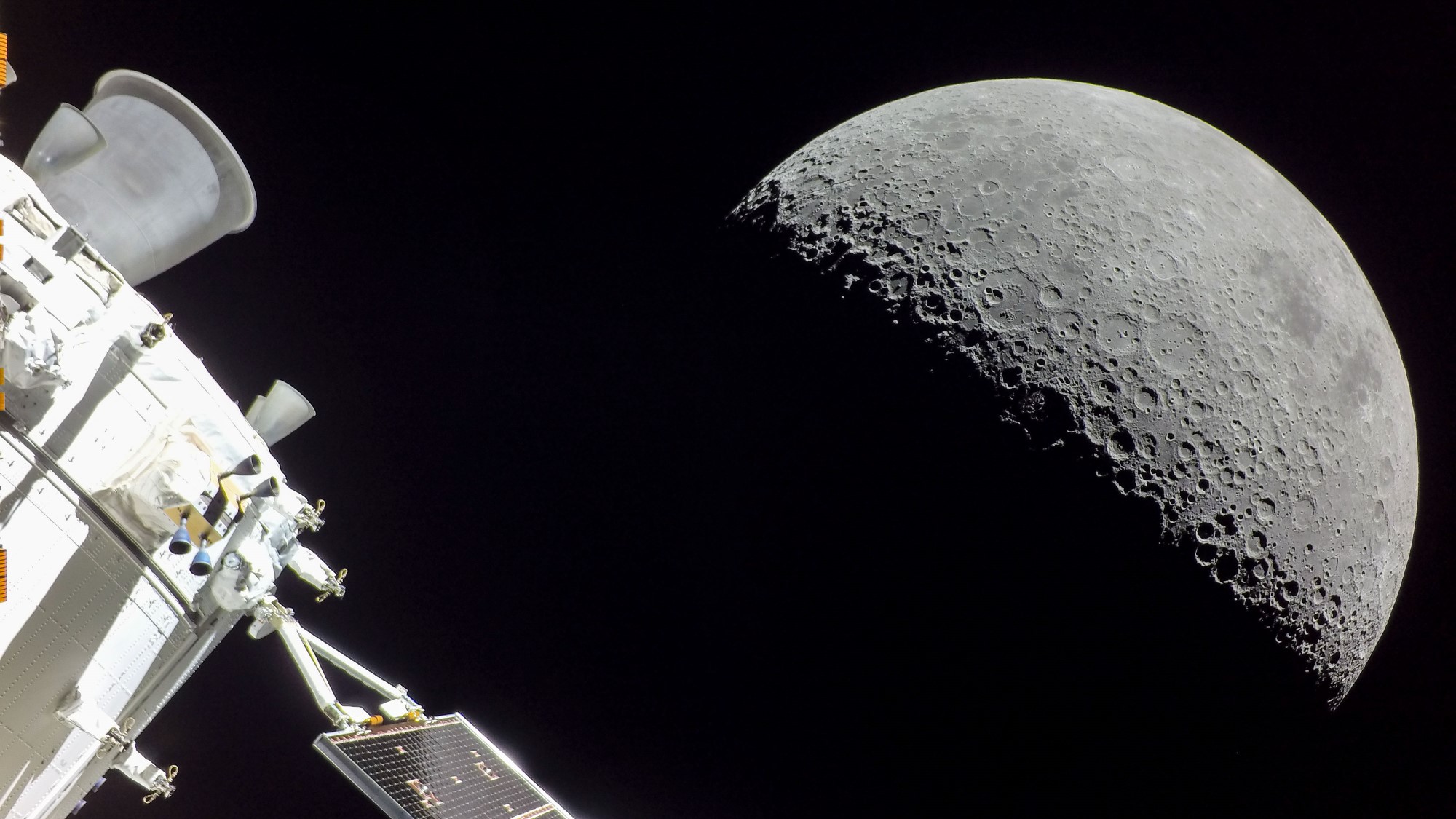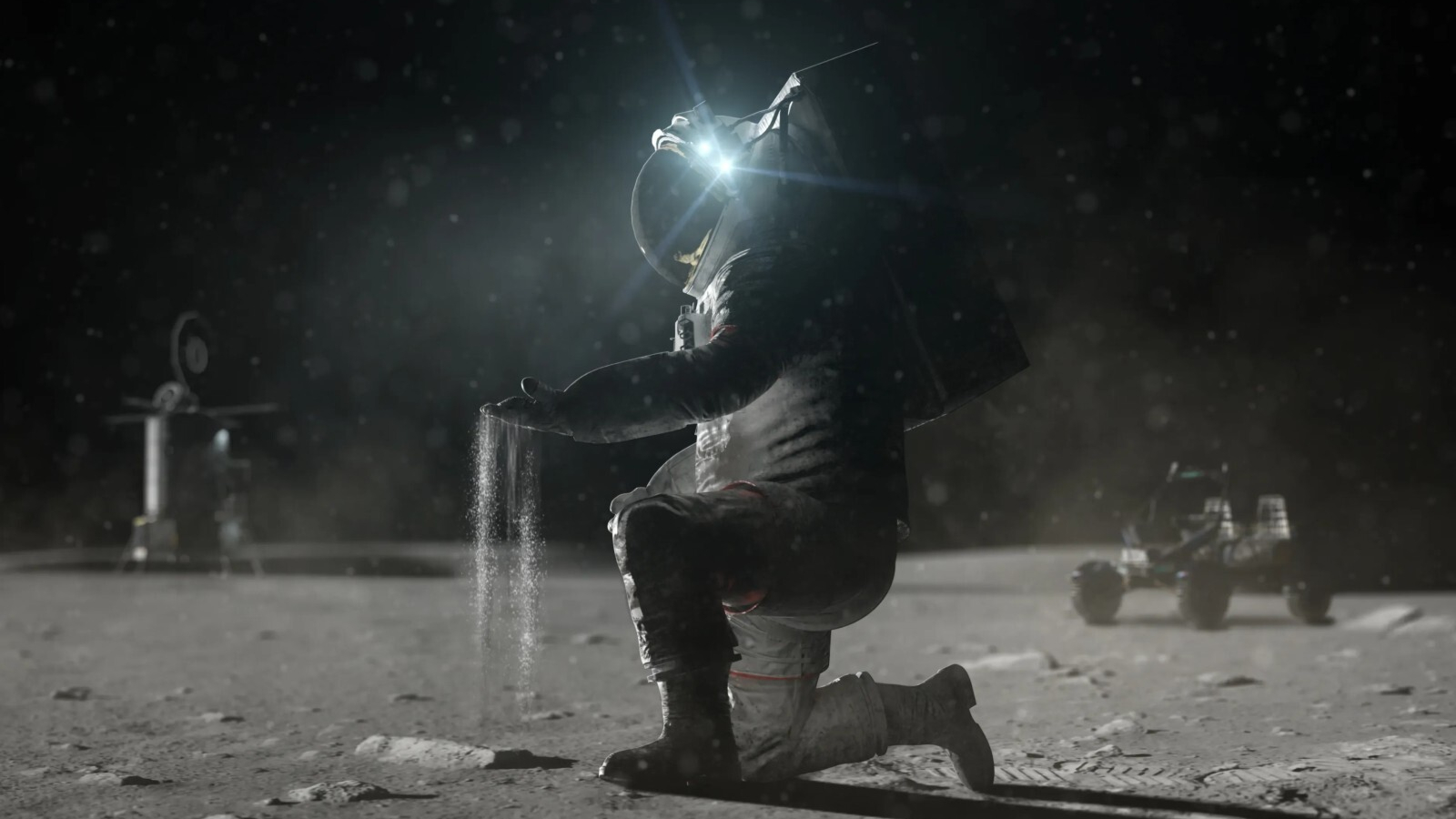
NASA will get a funding boost next year, if all goes according to plan.
The White House's federal budget request for fiscal year 2024, which was released today (March 9), allocates $27.2 billion to NASA. That's $1.8 billion more than the agency got this year, an increase of 7%. As usual, however, NASA's slice of the overall pie is tiny; the budget projects total federal spending in 2024 to be $6.8 trillion.
The newly unveiled numbers are far from final: To be enacted, budgets must be approved by Congress, which holds the power of the purse in Washington.
Related: The 10 greatest images from NASA's Artemis 1 moon mission
The proposed budget would give NASA $8.1 billion for its Artemis program of moon exploration in fiscal year 2024, which begins on Oct. 1 of this year and runs through Sept. 30, 2024. That's a $500 million increase over the enacted 2023 Artemis funding.
"The Budget fully funds the rockets, crew vehicle, lunar landers, spacesuits and other systems needed to fly astronauts around the moon on the Artemis 2 mission and then land astronauts — including the first woman, first person of color and first astronauts from another nation — on subsequent Artemis missions on the lunar surface as America begins development of a lunar outpost and aims toward the eventual exploration of Mars," White House officials wrote in the 182-page budget request, which you can read here.
The funding boost could be seen as a vote of confidence in Artemis, which notched a huge success late last year: The uncrewed Artemis 1 mission aced its 25-day trek to lunar orbit and back, showcasing the readiness and capabilities of NASA's new Space Launch System megarocket and Orion capsule.
Breaking space news, the latest updates on rocket launches, skywatching events and more!
Artemis 2 is scheduled to launch in 2024, and Artemis 3 will land astronauts near the moon's south pole a year or so later, if all goes according to plan.
The proposed budget also allocates $949 million to NASA's Mars sample return project, a collaboration with the European Space Agency that aims to get pristine pieces of the Red Planet back to Earth as early as 2033.
Those samples are being collected by NASA's Perseverance rover, which touched down on the floor of Mars' Jezero Crater in February 2021. Perseverance carries 38 titanium sample tubes and has already filled 18 of them.
Other highlights of the budget request are $2.5 billion for NASA's Earth Science program and $180 million toward the development of a new space tug that could help deorbit the International Space Station (ISS), among other off-Earth tasks.
The ISS is expected to retire at the end of 2030 and must be brought down safely in a controlled fashion shortly thereafter. The new space tug would be an alternative to "Russian systems that may not be able to accomplish this task," the budget document states.
The new "skinny budget" proposal doesn't give many more details; those will come on Monday (March 13), when the fleshed-out budget is released. NASA will hold a press conference that day at 1 p.m. EST (1800 GMT) to discuss the budget; you can watch it live here at Space.com.
Mike Wall is the author of "Out There" (Grand Central Publishing, 2018; illustrated by Karl Tate), a book about the search for alien life. Follow him on Twitter @michaeldwall. Follow us on Twitter @Spacedotcom or Facebook.
Join our Space Forums to keep talking space on the latest missions, night sky and more! And if you have a news tip, correction or comment, let us know at: community@space.com.

Michael Wall is a Senior Space Writer with Space.com and joined the team in 2010. He primarily covers exoplanets, spaceflight and military space, but has been known to dabble in the space art beat. His book about the search for alien life, "Out There," was published on Nov. 13, 2018. Before becoming a science writer, Michael worked as a herpetologist and wildlife biologist. He has a Ph.D. in evolutionary biology from the University of Sydney, Australia, a bachelor's degree from the University of Arizona, and a graduate certificate in science writing from the University of California, Santa Cruz. To find out what his latest project is, you can follow Michael on Twitter.
